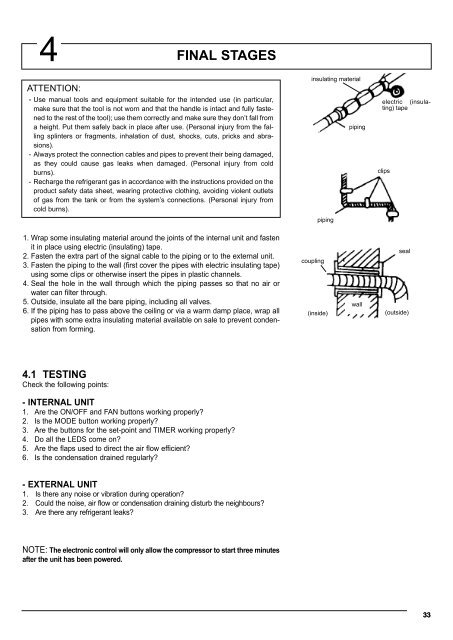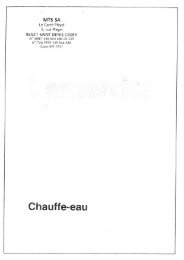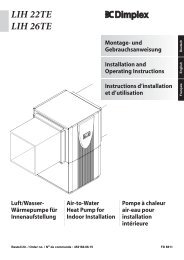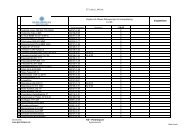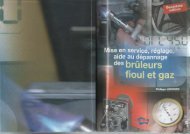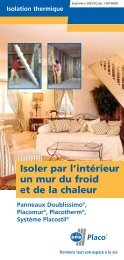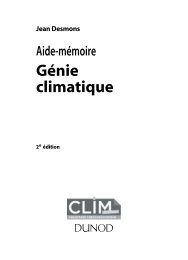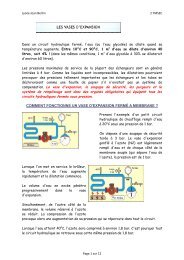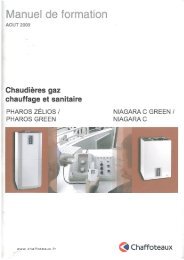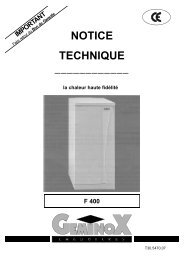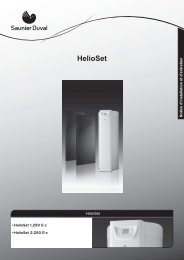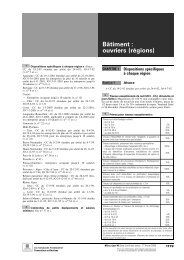MANUALE PER L'INSTALLAZIONE - enrdd.com
MANUALE PER L'INSTALLAZIONE - enrdd.com
MANUALE PER L'INSTALLAZIONE - enrdd.com
You also want an ePaper? Increase the reach of your titles
YUMPU automatically turns print PDFs into web optimized ePapers that Google loves.
4<br />
1. Wrap some insulating material around the joints of the internal unit and fasten<br />
it in place using electric (insulating) tape.<br />
2. Fasten the extra part of the signal cable to the piping or to the external unit.<br />
3. Fasten the piping to the wall (first cover the pipes with electric insulating tape)<br />
using some clips or otherwise insert the pipes in plastic channels.<br />
4. Seal the hole in the wall through which the piping passes so that no air or<br />
water can filter through.<br />
5. Outside, insulate all the bare piping, including all valves.<br />
6. If the piping has to pass above the ceiling or via a warm damp place, wrap all<br />
pipes with some extra insulating material available on sale to prevent condensation<br />
from forming.<br />
4.1 TESTING<br />
Check the following points:<br />
FINAL STAGES<br />
ATTENTION:<br />
- Use manual tools and equipment suitable for the intended use (in particular,<br />
make sure that the tool is not worn and that the handle is intact and fully fastened<br />
to the rest of the tool); use them correctly and make sure they don’t fall from<br />
a height. Put them safely back in place after use. (Personal injury from the falling<br />
splinters or fragments, inhalation of dust, shocks, cuts, pricks and abrasions).<br />
- Always protect the connection cables and pipes to prevent their being damaged,<br />
as they could cause gas leaks when damaged. (Personal injury from cold<br />
burns).<br />
- Recharge the refrigerant gas in accordance with the instructions provided on the<br />
product safety data sheet, wearing protective clothing, avoiding violent outlets<br />
of gas from the tank or from the system’s connections. (Personal injury from<br />
cold burns).<br />
- INTERNAL UNIT<br />
1. Are the ON/OFF and FAN buttons working properly?<br />
2. Is the MODE button working properly?<br />
3. Are the buttons for the set-point and TIMER working properly?<br />
4. Do all the LEDS <strong>com</strong>e on?<br />
5. Are the flaps used to direct the air flow efficient?<br />
6. Is the condensation drained regularly?<br />
- EXTERNAL UNIT<br />
1. Is there any noise or vibration during operation?<br />
2. Could the noise, air flow or condensation draining disturb the neighbours?<br />
3. Are there any refrigerant leaks?<br />
NOTE: The electronic control will only allow the <strong>com</strong>pressor to start three minutes<br />
after the unit has been powered.<br />
insulating material<br />
coupling<br />
piping<br />
(inside)<br />
piping<br />
wall<br />
electric (insulating)<br />
tape<br />
clips<br />
seal<br />
(outside)<br />
33


